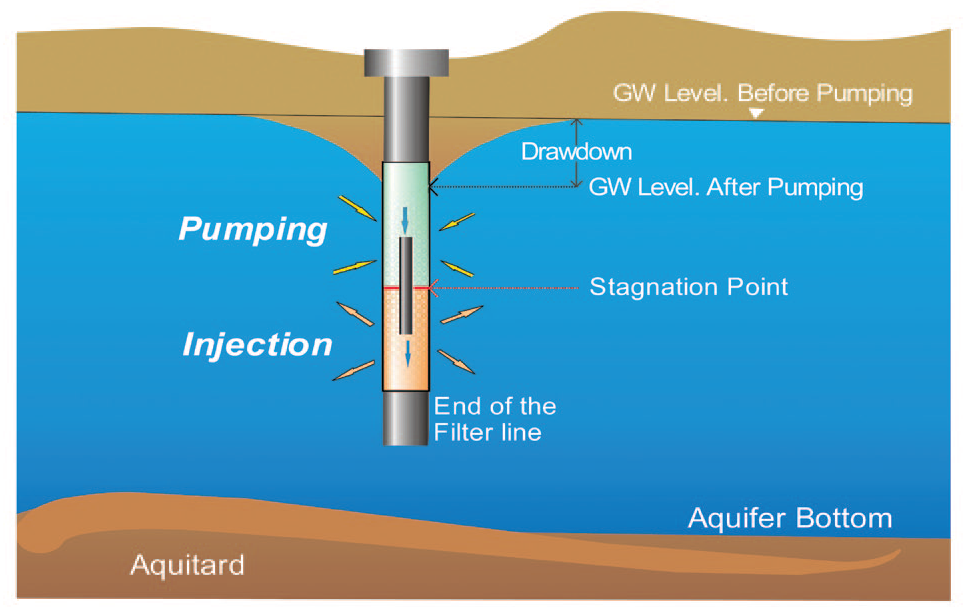
Düsensauginfiltration (DSI) is a novel technique for lowering water levels at mining and construction sites while not actually having to transport the water away from these sites. This came to my attention at the latest COMSOL Conference in Stuttgart. There, Ph.D. student Yulan Jin and Assistant Professor Dr. Ekkehard Holzbecher from the Georg-August University in Göttingen, Germany was presenting their research into this groundwater lowering technique.

Sketch of the borehole pumping and injection concept – Düsensauginfiltration
Working together with Hölscher Wasserbau, a leading German dewatering company, Yulan, Dr. Holzbecher and the rest of Professor Dr. Martin Sauter’s group have studied and modeled this little-understood method. A bit unusual, the method involves pumping water into a vertical pipe from the top and then injecting this same water back into the aquifer at the bottom of the pipe. This creates a localized lowering of the groundwater level with a corresponding draw-down in the ground surface.
The advantages with DSI is that the water that was traditionally pumped or transported to external sites is now kept within the same aquifer, lowering environmental impact, the work required to pump the water and, of course, costs. On the fundamental level, they were able to prove that the method works, and compare it to traditional methods.
But they have since gone further and are able to create guidelines for the use and optimization of DSI at future work sites. As each site is unique, and aquifers themselves can vary due to seasonal changes, Professor Sauter’s group has shown that modeling is an integral part of DSI. You can read more about their research on the Simulation of Novel Groundwater Lowering Technique, or access their User’s Story in COMSOL News.



Comments (0)